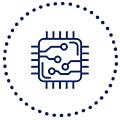Sign up with Velocity to expand your ecosystem.
Already Signed Up? Log In
What could you do with access to more targeted market opportunities and new partners in your industry?
Access our global team to connect with enterprises and accelerate your commercialization efforts.

Access new technologies and business models that can replicate globally to create an innovation engine that aligns with your strategic roadmap.
Join Velocity to incorporate technology trends early on and enter new markets.
Velocity is a business development and market access platform
that allows companies to access global markets,
quickly identify meaningful partner opportunities
and strategically grow their businesses in multiple verticals.
Leverage Velocity to access VC & PE investors, enterprises,
law firms and system integrators and efficiently explore growth markets,
strategic partnerships and acquisition opportunities.
With access to 23 countries, Velocity operates on a global scale across industry verticals.
Learn more about how we create ecosystems that help deploy innovation across startups and enterprises.

A home automation company sought to expand into the North American market. Blindly emulating other competitors, the company opened an online sales channel to tap into the Do-It-Yourself segment, but was disappointed with lackluster sales volumes. The Client needed a comprehensive go to market plan and execution strategy and engaged IDL to help overhaul the overall business trajectory.
The IoT industry has long struggled with the ultimate use case. Partly because the market adoption has been slow as interoperability continues to be a big issue, companies have launched all sorts of point solutions. IDL worked with the Client to create an interconnected platform that worked seamlessly across Wi-Fi, Zigbee and Z-wave devices along with the larger automation systems including Crestron and Control4. Second, IDL helped the company pivot from a consumer to a B2B strategy, creating cost-effective distribution channels.
IDL helped expand the company’s operations in Latin America, showcasing the value proposition of affordable smart home solutions. IDL also worked with the Client and strategically positioned it at Google I/O as an early-access partner to interact with compatible smart home devices through the Google Assistant. In addition, IDL helped create a strategic partner program with Amazon Alexa and other smart home solutions to create a hub for security, lighting and voice controlled smart homes.

In the glamorous film and movie production world of Hollywood, there are two major challenges: access to investment grade productions and transparency of earnings as the productions are monetized. The term Hollywood accounting has been rather infamous for opaque methods used by the industry to budget and record profits for film projects. A new studio decided to usher in a new era of transparency and create a transformational business model by making the asset class accessible to retail investors.
Media and entertainment companies are at the cusp of rapid transformation. With new technologies such as blockchain, AR/VR, and other connected devices, these production houses are continuously adapting to changing audience preferences and how content is consumed. IDL partnered with the Hollywood studio to deploy blockchain technology and create a security token (equity) built on the Ethereum platform which allows fractionalized ownership in film, television, music and other IP-driven content where every day qualified investors can, for the very first time, participate in the Hollywood industry in a capacity previously available only to large, elite institutions. This allows for an equitable and transparent distribution of the production’s profits to all the profit participants. In the process we also helped create and tap into synergies between the China and Hollywood film industries.
Proteum (IDL’s blockchain brand) was sought out by the CEO to help create the architecture and business strategy. Proteum was instrumental in creating the tokenization platform and the necessary infrastructure for investors to participate in this unique offering. In addition, IDL created a complete regulatory roadmap for compliance with jurisdictional laws in the US, Europe and parts of Asia in consultation with global lawfirms. The robust strategy and tech platform allowed the studio to raise $100M+ in institutional investment in a “a game-changing moment for the entertainment industry”.

Blockchain technology holds a lot of promise for a variety of industrial use cases. However, companies have struggled to create a strong value proposition to make a case for enterprises to start adopting the technology. As with connected devices, the blockchain industry has not evolved to consider the challenges associated with interoperability and as such, while most companies are focused on innovative yet niche applications, enterprises have found it hard to scale it beyond Proofs of Concepts (PoCs) and adapt to a diverse set of regulatory environments. The Client engaged IDL to create an adoption ecosystem.
IDL’s significant experience at the intersection of innovative technology, business models and regulatory compliance quickly enabled us to think broadly and strategically about how to create and nurture an ecosystem of partners. IDL began with an objective analysis of the market readiness for blockchain technology and zeroed in on applications that are more mature. Our conversations with CXOs across industries and business units helped us surface their priorities, expectations and ideas. To be successful, the company needed a strong enterprise backing to overcome the hurdles of organizational readiness to technology and privacy issues.
As a first step, IDL pushed the company to create interoperability tools to integrate with the tech stack of a Fortune 100 cloud service provider and create a joint go-to-market program to tap into three markets: digital credentials, supply chain and trade finance solutions. From an interoperability standpoint, IDL is exploring standardization of the Client’s technology for ushering in transparency in the logistics industry.

The company is a 40-year-old company in the bay area known for its high quality telecom equipment. With over 8500 customers worldwide, the company enjoyed a stellar reputation for its products. When the founder passed away without a succession plan, the company was able to survive for almost 3 years on an autopilot mode, just by fulfilling inbound sales orders. However, new sales lagged, threatening the company’s viability. IDL was tapped by the company’s law firm to help re-energize the company, usher in new product roadmap and reposition the company on a growth track.
IDL worked closely with the CEO and the management team of the company. Early on, IDL identified that the Client’s product mix was not in keeping with the changing landscape of telecom demand and the company was saddled with extra inventory that weighed on its ability to be innovative. IDL help optimize the product mix, helped recruit new technology and sales teams to create new products. This allowed the Client to diversify its revenue stream across product verticals. IDL also helped in establishing an improved supply chain and manufacturing operations overseas in order for the competitive to be cost effective.
IDL played a key role in ensuring that the company re-energized its channel partners and distributors across the globe, incentivizing them accordingly for increased sales. For an improved product mix, the Client was able to launch products to cater to white space opportunities in the telecom spectrum, focusing on instrumentation and testing in the sub 1GHz category. In addition, IDL helped the Client identify and engage with overseas contract manufacturers in Philippines, China and India to cater to the adjacent market demand and lower their cost structure.

The eye care market is defined by optometrists and ophthalmologists who routinely work together to deliver patient care. The vision space is data image heavy. As a result, it is imperative to capture, store and transfer patient data securely and in a way that it can be shared easily amongst the service providers. However, today, most medical providers do not have the proper tools to share data or the insights learned through data with their fellow care givers. As a result tests have to be repeated and care is often delayed. IDL worked with the founding team to create a blueprint on how these inefficiencies could be eliminated.
IDL incubated the company from day one and partnered up with both ophthalmologists and optometrist practices to understand how they captured, stored, utilized and shared patient data. IDL brought in expertise from both the medical providers and software engineers to architect a solution that can cater to the needs of various participants in the value chain.
The Client is in stealth mode and IDL serves as an operational partner to the management, helping create strategic partnerships with ophthalmic equipment manufacturers, pharmaceutical and drug companies and potential investors.

The company is a startup with a highly experienced team of executives and engineers working on creating solid state batteries that can be made at half the price and twice the power density. This was (and still remains) a novel engineering concept and it was hard for the company to secure buy in from early strategic partners and also to raise funds for an ambitious idea. While it was clear that the market for batteries is ever expanding, the risk for investors and partners seemed unsurmountable. In addition, battery technology is a capital intensive business and not prone to easy disruption by startups.
The company retained IDL to provide an independent diligence and review of its technology, intellectual property, industry and market roadmap. IDL conducted a thorough due diligence of the chemistry, the new manufacturing process, and evaluated the early prototypes. As we worked with the CEO and CTO, it became clear that the existing manufacturing processes were inefficient to tackle the increased demand for energy with large scale deployment of industrial IoT and 5G technology. In addition, there were efficiencies to be gained by reimagining the battery chemistry and the manufacturing processes.
IDL was able to ascertain that if the technology succeeded, the entire manufacturing process could be converted from a capex heavy enterprise to an opex model. This would create significant cost savings for incumbents and give them an option to create new lines of businesses without cannibalizing their existing revenues. IDL presented these findings to a telecom company and worked to onboard them as the company’s first external equity investor. Since then, IDL has continuously introduced the company to a wide mix of automotive, medical devices, and telecom companies etc. A few weeks after the investment was made, Prof. Goodenough, inventor of the Li-ion battery, announced that he was working on a similar approach, validating IDL’s thesis.

Identity management remains a major issue for enterprises. The growth of digital communications has resulted in varied technology environments that often have complex business demands. Some of the biggest identity and access management (IAM) challenges faced by these organizations include excessive identities and directories that often complicate tracking and tracing communications leading to severe compliance challenges. IDL worked with an IAM company to simplify identity management and streamline their path to market.
The startup had created an enterprise grade software solution for alias management, specifically applied to group communications. They had secured numerous enterprise pilots to showcase the solution, yet were struggling to convert the pilots into a clear value add that would be appealing to large enterprises. IDL engaged with the company to create an actionable go to market strategy and follow through on enterprise adoption. We identified that the market was fragmented with little standardization. Nowhere was this more challenging than maintaining unique identities managed by large marketing teams separately for each of the social networks and yet making them interoperable across various properties.
When IDL engaged with the company to pivot and reposition its products in the marketplace – ceding the turf on identity management for messaging and doubling down on the opportunity to provide alias management features for marketing platforms for social media usage. The new products gave businesses and enterprises an ability to leverage an integrated brand identity while simultaneously interacting with a segment of their audience, establishing a singular brand presence online. The company was acquired by a social media company within 18 months of the pivot.

With the onset of ecommerce mobile phones and a sharp swing in commercial activity taking place in apps, credit card payments became the defacto standard. Yet credit card info stored on phones and local devices is a security risk. More so, when credit card payments are conducted online or in case of digital breaches. Storing such data in rest and in motion was a big market opportunity. However, the founders were early in the game and the market participants had yet to catch up. Despite creating a robust solution, finding the right product-market fit seemed elusive to the management team, who sought IDL’s expertise to onboard financial clients.
The company had created a solution for securing credit card data based on the concepts of tokenization. When we analyzed the market opportunity, it was apparent that the solution needed to secure data end to end through the value chain of the transaction. It required an ecosystem of partners including acquiring banks, PoS devices, credit card processors etc. Interoperability amongst various enterprise systems made it a complicated story for mass adoption. IDL played the role of an operational partner to push the solution to major financial companies.
As an operational partner, IDL created a framework for understanding the market, triangulating a buy in between security, compliance and fraud departments to influence major banks and fintech system integrators to adopt the technology. IDL engaged with fintech SIs to showcase how the technology could be easily integrated into existing infrastructure, without disrupting the payments engine. As a result, IDL was able to gain 12 Fortune 500 banks and financial institutions to adopt the technology.

Ever since the inception of internet, people have tried to find and fulfil their housing needs online. Whether it is college students or young families, Craigslist has been the go to website for finding apartments. However the UX and design have not kept pace with the times. As other properties have emerged, rentals still remain “hard to find,” because properties exists across disparate inventories, paid placement interferes with organic search results and amenity tagging and searching is limited.
The company had a vision for creating a modern portal to create a rental search experience that was singularly focused on renter needs and create an environment that empathized with the renter’s needs. In addition, the founders had access to inventory listings across a variety of properties. IDL’s role was to create innovative tools to help renters, owners and managers make effective and efficient decisions about their properties. We were tasked to provide a complete tech solution to ingest data and create one of the largest housing inventory pools for the country – all within a span of 10 weeks, prior to starting their roadshow for potential investors.
IDL engaged with the company to establish a baseline MVP that would help them with their fund raising efforts. Early on, we honed in to the vision of amenity tagging as a key differentiator and presenting property listings as a clean modern UI for the browser. Working with a diverse team of front end and backend engineers, designers and the founders, we were able to create a scalable architecture that delivered unique, intuitive, and innovative search tools to the users (renters, owners and property managers) and enable a new business model by eliminating pay-to-post listings. Prior to the roadshow, the company had ingested approx. 4M rental listings onto their platform.

Despite all the hype and adulation, enterprise blockchain solutions have not gained much traction so far. The logistics, supply chain, and transportation industry is much behind the curve as they continue to use outdated systems of record that are not interoperable. System sensors and data pools within each link of the supply chain are largely incompatible, making it difficult to access data. Additionally, if the data that is ingested into blockchain systems is poor in quality, it compromises the data assumptions for all subsequent uses and renders the system incapable of working through the challenging requirements of the industry.
At IDL we understand that the impact of enterprise blockchain systems for supply chain and logistics can be revolutionary. In order to create incentives for all participants to adopt blockchain tech, it is imperative to first get them to adopt a standard system of record that does not suffer from issues related to data silos and fragmentation, provides transparency and highlights ownership of the data itself. Along with a large trade association and governing body, we are working towards tackling the problem of data standardization and interoperability amongst enterprise systems.
Our work in this area involves an active participation in the working committee of a standards organization comprising the largest freight and logistics providers in the world. We are also participants on the select implementation taskforce where we are deploying various elements of blockchain technology, distributed ledgers, digital credentials, tracking and tracing solutions etc. to enhance the transparency and visibility of shipped goods and produce around the world.

In a globally connected world, companies succeed when they focus on their core competency and leave the rest to their partners, agencies or outsourced vendors. One such area is in hardware design and manufacturing. Traditionally, Silicon Valley companies have relied on a completely outsourced model with offshore manufacturing. This model has its flaws as relates to loss of control over design and intellectual property, quality issues and managing the supply chain. The recent explosion in connected device deployments has accelerated a demand for quality contract manufacturing.
At IDL we partner with contract manufacturers in the US, India, Malaysia, Philippines, Taiwan, Mexico and China, brining in a unique capability to source products in a cost efficient manner and with strict adherence to the timelines. We deliver services related to designs for manufacturing, prototypes, electronics assembly etc.
Our experience in this space spans telecom equipment and devices, medical devices and healthcare equipment, wearable devices and industrial IoT sensors etc. We work with startups and mid sized companies to help them source strategically, and help create product roadmaps and help them plan a roadmap for an effective and efficient go to market. We also work with enterprises to help them create quick prototypes and tests for specific markets and applications, refining the product attributes and making them ready for large scale manufacturing.

Data capture is an ever increasing exercise. Every day sensors and devices capture a large variety of data for analysis. This is an increasingly challenging data governance problem and particularly for the associated metadata. Most organizations have struggled to keep pace with new data sets. As this data increases in velocity and volume, enterprises also struggle with maintaining an increasingly complex metadata structure. Compounding the problem is the fact that the same data can be used in different contexts and needs to reflect the relationships among various data elements accordingly. For industrial IoT devices, this is a severe challenge.
IDL worked with a startup company in Illinois to help them transition their solutions for metadata management from an on-prem to a SaaS cloud environment. IDL provides developers and resources to recreate a Saas product for metadata management, simplifying resource management by creating an efficient workflow between UI metadata, business application and process logic and management of metadata lifecycle. IDL worked with the team to define the new product roadmap and business model.
Early in the diligence IDL figured that most data tracking techniques and metadata management solutions did not address the needs of businesses that had highly custom CRM needs specific to their industry nor did they address specific business processes unique to their applications. This key insight enabled the company to position itself accordingly and provide a horizontal approach to sharing and reuse of metadata across business processes and applications. The transition to a SaaS model improved the business economics and the company was acquired by a large enterprise within a year of the transition.

In industrial applications online manuals are now the norm and are increasingly becoming more and more interactive. With augmented reality, it is now easy for field technicians to overlay images and multimedia data from a multitude of devices, imaging sensors, or assembly drawings, audio and video communications, etc to provide hands-free real time information access. The company was ahead of its peers in recognizing the need for products that could fulfil a demand for a wearable device that could augment the reality of field operations specially in harsh environments.
Our engagement with the company was to evangelize and help with business growth in industrial environments such as warehouses, oil and gas and reverse logistics. In addition, the company had built up significant intellectual property, patents etc. and wished to explore licensing opportunities with development partners and their customers. IDL worked as an extension of their business development arm and was successful in creating several partnerships and PoCs for various industrial use cases.
Augmented reality remains a challenging technology to work with and the promise has not yet been fully realized. While we successfully worked with the company to create innovative technology and business models, reaching critical mass and scale remained elusive. This is when IDL suggested that the company explore merging with a larger and more established player. As we set out to identify potential suitors, we were able to creatively position the company and its IP as synergistic to a cell phone handset maker that acquired the company and eventually launched a new line of business with wearable devices that traced their origin to the IP developed by the company.

As the trend of BYOD (bring your own device) to work started to gain traction, the security of devices such as tablets and mobile phones for enterprise use started to become a big concern in business environments. In the US almost 80% of companies now allow employees to use their own devices for work. In doing so, the biggest concerns revolve around employee mobility and data breaches. More than 50% of companies that allow BYOD have had their data breached. Employers may desire to monitor and manage Internet activities on mobile phones of their employees to limit access to Internet sites inappropriate for a workplace, promote productivity, and control costs. BYOD still remains a significant opportunity and challenge for enterprises.
Our client was a startup company that had developed solutions to make it easy for network administrators to configure and enforce policies for personal devices used in work settings. IDL worked with the company to understand the market requirements for enterprise security policies and helped the company tailor solutions that addressed market needs. In short helping them achieve a PMF (product-market fit). We identified necessary components for effective BYOD policies and helped establish stringent security policies for all devices. We advised the client on policies for acceptable use, minimum security requirements, and a company’s rights for enforcing the policies on their employee’s devices.
IDL engaged with enterprise partners and created an advisory group comprising of CIOs and CSOs to understand their requirements. As we engaged with them more, they willingly became beta testers for the client’s customers and helped tune the product for enterprise activity, including creating necessary integrations and defining the policies in granular detail. The client was able to leverage these insights and tailor a base product with adequate functionality to launch. Armed with a steady customer base and sizable recurring enterprise revenue, the client was an attractive takeover candidate and was acquired by a private equity group.
A fabless semiconductor company designing network and embedded power chips server processors etc. The company had historically grown through IP acquisition to enter new markets and had a very large portfolio of assets and IP cores. As the business grew, the company failed to anticipate the market shifts and to meet Wall street expectations, it was divesting a large chunk of its legacy business related to network processors.
On behalf of a private equity firm, we engaged with the company to conduct diligence on the assets that the company wished to spin off and analyzed the portfolio of technologies. While some of the legacy products and business lines served declining markets, we identified that a particular line of products, related to asynchronous transfer of network packets could be attractive and repositioned in the embedded connectivity market. We advised the PE group on carving out the assets, the IP, relevant product and market licenses.
Shortly after the assets were spun off from the parent company, we worked again with the PE group advising them on the business opportunities and created synergies with another semiconductor company in their existing portfolio. The acquired IP cores were valuable in solving a niche packet congestion issue for their network processors and leased a new life into their product range, making them competitive over other solutions, and extending their lifecycle.













